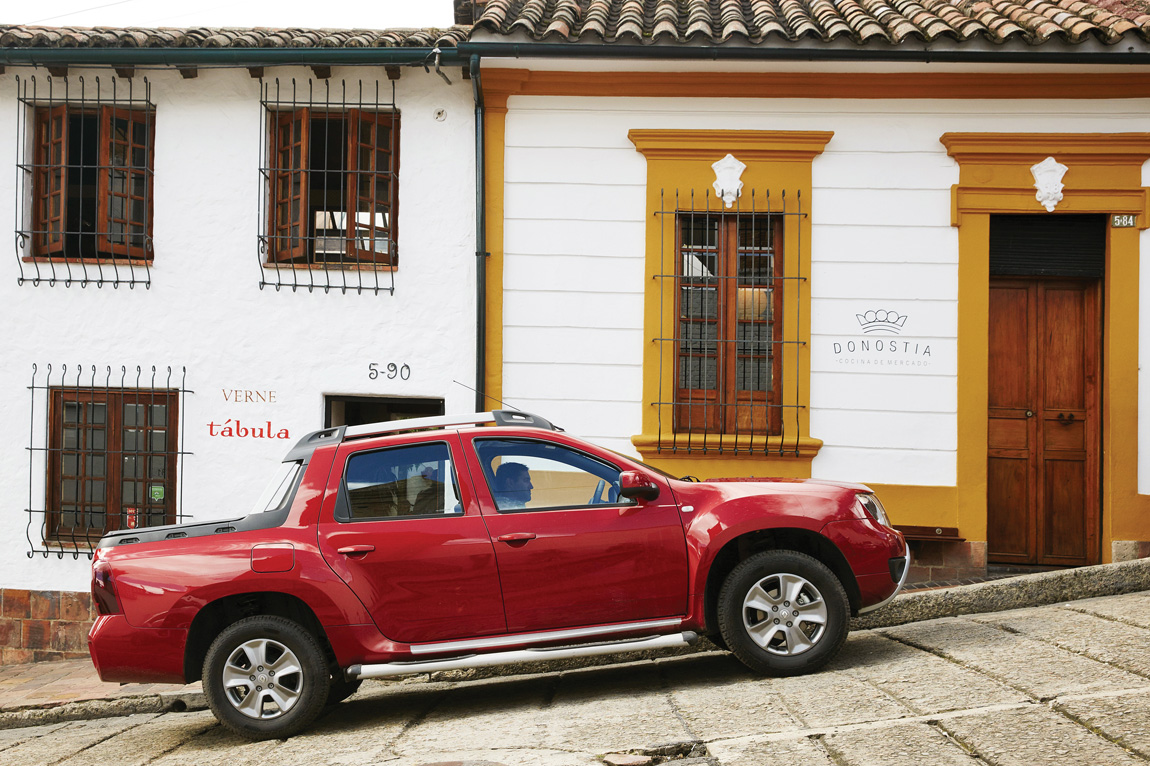Renault Alaskan brings diamond spark
It’s an interesting and busy time in the pickup segment of the automotive industry, as a number of new players enter the market, writes JARLATH SWEENY from Fleet Transport. He attended the launch of Renault’s contender: the Alaskan.
It could be said that the one-tonne pickup truck segment is entering a golden era worldwide, and Renault wants a piece of the action.
Global sales of pickups in general have reached 4,66-million units annually and are continuing to grow. The North American market leads the way, while South America, South Africa and Asia also have extensive numbers of loyal, traditional customers.
Meanwhile, Europe is beginning to make an impact, recording consistent growth with volumes up by 51 percent since 2009. Hence the interest from European brands to get serious, develop new models and reap the benefits.
Of the nine brands in the segment, Group Renault – through its Alliance partners Nissan and recent collaborator Mitsubishi – can take credit for being involved in five models.
Spawned from the latest Nissan Navara is the new Renault Alaskan, and the Mercedes-Benz X-Class, which will arrive soon, while readers will know that the new Fiat Fullback is derived from the current Mitsubishi Triton.
Following the global premiere in 2016 of the new one-tonne pickup truck in Colombia, South America, and its appearance at a number of motor shows, the next phase of the new product’s launch got underway with the inaugural press test-drive programme in Slovenia.
Leading up to the event in Ljubljana, Ashwani Gupta, global head of Renault-Nissan’s light commercial vehicle (LCV) business, said: “Renault is entering Europe’s particularly buoyant one-tonne pickup segment, which registered growth of 25 percent in 2016 and 19 percent in the first half of 2017.
“As a major player in the LCV market with a network of almost 9 000 sales outlets across Europe, Renault continues to extend its range with the Alaskan.
“Following the Alaskan’s release in Latin America, its availability in Europe is further evidence of Renault’s global ambitions. The Alaskan is a robust, powerful pickup that has been designed to meet the needs of demanding business customers and private buyers alike.”
In developing the Alaskan, Renault utilised the decades of four-wheel drive (4WD) experience and expertise of its alliance partner Nissan, together with its own knowledge gleaned from creating SUVs from its car division and lighter pickups on sale through its Dacia subsidiary.
The many unique design traits of the current award-winning Nissan Navara have been successfully transferred over to the Alaskan, with Renault’s design department putting the French brand’s latest and distinctive model range theme on it.
Renault Pro+ (the brand’s commercial arm) LCV design director Louis Morasse is passionate about pickups, to the extent that the Canadian claims that he was born in the back of one! In his eyes, pickups are dream machines. “It’s so easy to fall in love with them,” he said. He is particularly pleased with how the Alaskan turned out.
Thanks to its five-link rear suspension (developed by Nissan for the Navara) the Alaskan offers outstanding travelling comfort both on and off-road. It has proved once again – on both the rough and soft terrain on the test sessions under the shadow of the snow-capped Alps – that the vehicle’s off-road capabilities and rugged qualities haven’t been compromised.
The highly resistant ladder-frame chassis, working in tandem with the five-link rear suspension, allows for a payload of more than one tonne, and offers a towing capacity of up to 3,5 t. These features are likely to be key selling points of the new pickup, along with an expansive dealer and repair centre network across Europe.
The Alaskan features the Group Renault engineered four-cylinder 2,3-litre dCi diesel engine, available as either a single (113 kW/403 Nm) or twin (141 kW/450 Nm) turbo, and already popular in the Renault Master light-commercial range.
The engine’s twin-turbo technology combines a small turbo to provide strong torque at low revs and a larger turbo to provide more power at higher revs.
It can be specified with either a six-speed manual gearbox or seven-speed automatic transmission. With a factory-estimated combined-cycle fuel consumption of 6,3 l/100 km and a CO2 emissions rating of 167 g/km, the Alaskan is deemed to be one of the cleanest and most efficient vehicles in its sector.
The brown and silver 4WD twin-turbo models driven with automatic transmission had 125 kg of sand in the load bay safely stored in a hard plastic lockable box, which is just one of the many accessories available for the Alaskan.
Driving on the tarmac it was as comfortable as any SUV, though with a better driving position and all-round visibility. The 360° camera view from the dash-mounted screen was also invaluable when it came to turning and manoeuvring, and proved beneficial along the narrow gravel tracks with full 4WD low-range engaged.
The Alaskan is a standard European-sized pickup that meets the demands of both business customers and private motorists. Building contractors, tradespeople and farmers are one side of the potential customer base, while other private buyers will like its style and individuality that SUVs don’t offer. With some extra kit fitted from the accessories list, special versions can be created in order to stand out from the crowd.
Gupta mentioned that some retail customers want a spacious vehicle with cabin comforts worthy of a conventional passenger car, but with a generous rear load space and a high towing capacity for leisure use, all combined with exceptional off-road capability to tackle any kind of adventure. The Alaskan can meet that need.
Manufactured at Nissan’s Barcelona plant, the Alaskan entered sale in Europe in September 2017, with its double-cab, 4WD version.
Regarding the Alaskan’s local launch, Renault South Africa had this to say: “We continue to emphasise the importance to launch the Alaskan (and Oroch) locally. Right now, we are pressing ahead with the ongoing development for the right-hand drive units. The factory cannot confirm a production timeline” – ed.
The latin Amercian option
At the end of 2015, Renault launched the (Dacia) Duster Oroch in Latin America – a successful model in the half-tonne pickup category. Based on an SUV platform, the Duster Oroch is also a double-cab pickup with four doors and five seats, but more compact and lighter.

Nearly 30 000 Duster Orochs were sold in Latin America last year. Almost 15 000 more were sold over the first six months of 2017, representing an increase of 35 percent. Oroch is another model-in-waiting for the Dacia brand in Europe.
Renault South Africa could also not confirm when the Duster Oroch will make it to South African showrooms – ed.
As regular readers of FOCUS know, this magazine has been appointed an associate member of the International Truck of the Year (IToY)! FOCUS is the sole South African magazine to have joined this prestigious body. One of the advantages of this association is access to exclusive articles, specially written for FOCUS by ITOY jury members. This is one such article.
Published by
Focus on Transport
One Comment
Leave a comment Cancel reply
focusmagsa





Hi
Is the Renault Alaskan Bakkie available now in South Africa?